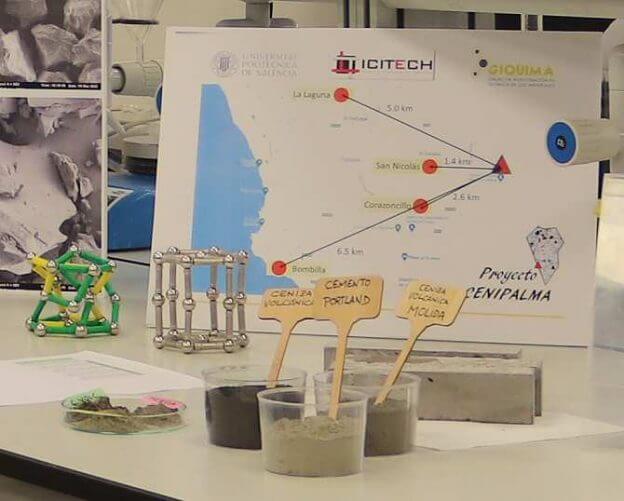By: Franyi Sarmiento, Ph.D., Inspenet, June 20, 2022
Scientists from the Concrete Science and Technology Institute (ICITECH), dependent on the Polytechnic University of Valencia (UPV) in Spain, are studying various samples of volcanic ash from the Cumbre Vieja volcano, on the island of La Palma, in the archipelago of The Canary Islands in Spain, in order to assess its potential use in the manufacture of cement and concrete.
The results obtained so far by the UPV team show that it is volcanic ash that is sufficiently reactive to be applied in the manufacture of cements with additions (type II) or pozzolanic cements (type IV). Likewise, the ashes show a good homogeneity taking into account the different origins of the collected samples.
“To date, we have carried out physical, chemical, mineralogical and mechanical tests, and the results show that these volcanic ashes meet the regulatory requirements for their use as a mineral addition in cement,” says Jordi Payá, from the Research Group in Chemistry of Construction Materials (GIQUIMA) of ICITECH.
Along with Jordi Payá, María Victoria Borrachero, Lourdes Soriano and José Monzó, researchers from ICITECH; as well as Mauro Tashima and Stanislav Barashkin, from the UPV.
Volcanic ash that is hundreds or thousands of years old has usually been studied, but in this case it is ash of recent emission, which makes it unique. On the other hand, each volcanic emission produces ashes with different characteristics, which is why, according to the ICITECH team, it is necessary to study each case in particular.
“These volcanic ashes should be considered as a natural residue, since it is a material that has occupied or is occupying spaces that correspond to infrastructures, industries, communication routes, fields and homes, hence the importance of carrying out these studies to be able to reuse this material”, adds María Victoria Borrachero.
In this sense, Lourdes Soriano points out that, in order to recover part of the social and economic activity, and, in addition, preserve the environment, an action is necessary that includes the withdrawal and use of the several million tons that may be available of this ash. “And, in view of the first results of our study, cement-based materials are a great alternative for managing this large volume of residual material. For this reason, this project is one more example of the social impact of research, in this case, of our contribution from the UPV to the recovery strategies of the island”, adds Lourdes Soriano.
Thus, the main objective of the UPV’s GIQUIMA-ICITECH team is to give value to this ash in the field of civil engineering, through conditioning and application through a cement or construction company. “Now we are already analyzing projects in which the results derived from the research can be applied,” adds José Monzó.
This NYTC Amazings portal material has been edited for clarity, style, and length.
Source: UPV y NYTC Amazings https://noticiasdelaciencia.com/art/44436/ceniza-volcanica-para-elaborar-cementos-y-hormigones
Photo: UPV

